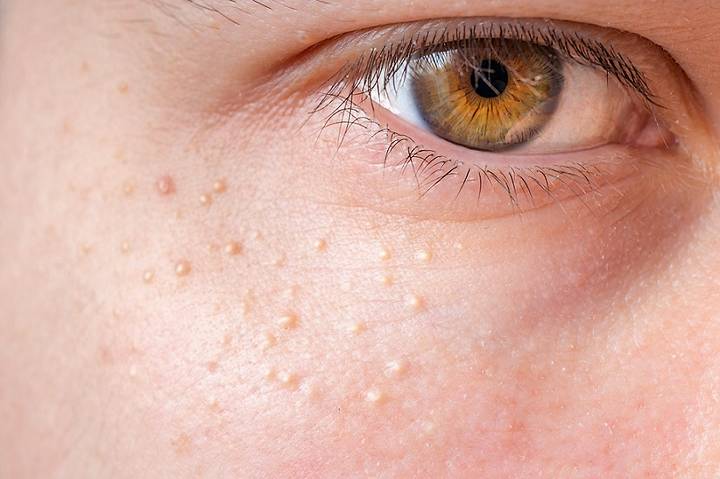
Milia are small, white, yellowish, or skin coloured spots, which form when keratin, the protein which makes hair and our outer skin, becomes trapped beneath the skin. They feel firm and rarely look inflamed.
They are not medically harmful, or contagious, yet can affect appearance and self confidence. Removal of milia for cosmetic reasons often makes sense, not least as they tend to be prevalent in visible areas.
Although neonatal milia (milk spots) on newborn babies are common, the condition can be seen at any age. Blocked sweat glands are a factor, whilst secondary milia can occur after trauma, or using the wrong skin cream.
There are also less common types. Multiple eruptive milia brings clusters of spots, milia en plaque can see the skin inflamed, or raised. Ensuring correct diagnosis by a dermatologist is the key to treatment.
Medical & Cosmetic Care
Milia are not the same as spots, they can’t be picked, or squeezed out and trying to do so could cause infection, or scarring. Removal should be in a safe environment, using sterile equipment.
The best approach for your case will be established once a consultant has identified the type of milia, discussed any related medical points and considered your skin condition.
Needle extraction is a useful approach, where a needle creates a tiny incision before removal of the unwanted protein. Hyfrecation is an alternative, which uses high frequency, low power, electrical impulses.
Cryotherapy (freezing) can be suitable in some cases, or topical creams. For rarer types, such as milia en plaque, there can be times when antibiotics will assist.
The location of the milia should play a part in treatment decisions, as will cosmetic aspects. Bringing back a normal, healthy appearance is the core objective.
Looking Forward
Good daily skin care helps prevent milia returning, along with regular exfoliation, as long as this is not too often. Our staff will be pleased to advise, once they get to know the nature of your skin.
A high quality sunscreen will help, as with many skin conditions, milia can be aggravated by damage from the sun’s rays. This applies to all ages, including for mature skin, where cell regeneration tends to slow down.
Milia is a condition which often sits on quite prominent areas, perhaps your eyelids, or cheeks. We understand the affect this can have and work with you to treat current issues, alongside looking to the future.
Our London cosmetic dermatologists offer a full range of milia treatment and a positive outlook. By all means get in touch if we can assist in any way.
You may find the options below useful:
- Links to details on: Cosmetic Conditions & Treatments.
For any advice, or to arrange a dermatology appointment, call 020 8441 1043, or send us an email via the Make An Appointment button below.
